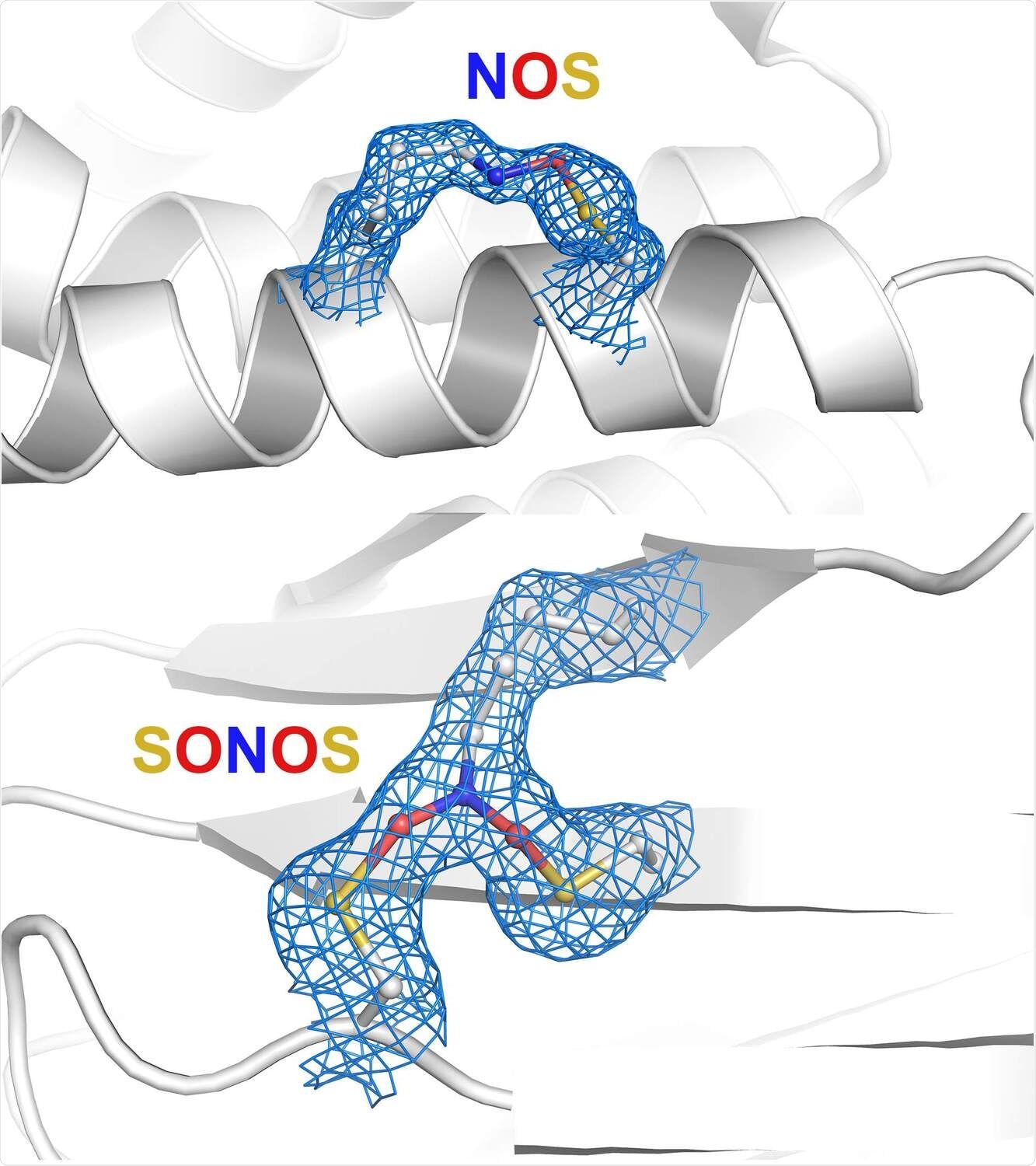Proteins are the “workhorses” of all living cells and are the chemical foundation of life. Proteins are required to convert food into energy, manage movements and brain functions, and combat germs and viruses.
Protein function is closely regulated in response to changing situations, such as when an organism is stressed and has to adapt. Researchers from the University of Göttingen recently found a brand-new family of proteins that work as a switch to control biological activity.

Researchers have recently discovered different types of protein switches which they have now identified as having a major role in all domains of life, from viruses like coronavirus to bacteria, fungi, plants, and animals including humans. NOS group (Nitrogen–Oxygen–Sulfur) above and SONOS group (Sulfur–Oxygen–Nitrogen–Oxygen–Sulfur) below. Image Credit: K. Tittmann.
Researchers have now studied all known protein structures and discovered that this category can be found in all domains of life, including viruses, bacteria, fungus, plants, and mammals, including humans. The effects of these studies are far-reaching for the treatment of a variety of disorders. The study was published in the journal Nature Chemical Biology.
The novel protein switch was first identified in a protein from the human infection Neisseria gonorrhoeae, and is called the “NOS switch” because it connects Nitrogen, Oxygen, and Sulphur atoms. The issue remained, however, as to whether this transformation was common in nature.
The researchers have now combed through a publicly accessible library of known protein structures in search of undetected NOS switches. The study’s first author Dr Fabian Rabe von Pappenheim from the University of Göttingen performed the computational analysis, which yielded hundreds of hits, each of which was carefully examined.
Investigating these structures was an exciting endeavor. It was like traveling into the unknown for us.”
Kai Tittmann, Professor, University of Göttingen
Kai Tittmann headed the study.
The new NOS switch has been discovered in all domains of life and is frequently present in the regions of proteins that are required for biological activity. Surprisingly, this switch is found in several proteins from some of the most lethal human viruses, including a critical enzyme from the SARS-CoV-2 coronavirus. The recently licensed antiviral treatment for individuals with mild to moderate Covid-19 who are at high risk of developing serious illness targets this switch.
Furthermore, the researchers found numerous novel chemical versions of the NOS switch, which is a widely utilized regulatory platform in biology. The proteins identified are involved in practically every aspect of cellular activity, including gene expression, cell-to-cell signaling, and metabolism.
We believe that the discovery of these new protein switches will be a springboard for the development of a novel class of drugs that directly targets these switches. Many human proteins with known roles in severe diseases as well as proteins from bacteria and viruses are now known to be controlled by such switches. The newly identified switch is likely to play a central role in regulating their biological function as well.”
Kai Tittmann, Professor, University of Göttingen
Source:
Journal reference:
von Pappenheim, F. R., et al. (2022) Widespread occurrence of covalent lysine–cysteine redox switches in proteins. Nature Chemical Biology. doi.org/10.1038/s41589-021-00966-5.